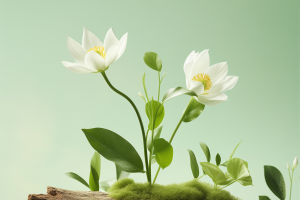Indoor plants bring life and beauty into homes, but keeping their soil consistently moist is essential for their health.
Moisture is crucial for nutrient absorption, root growth, and overall plant vitality.
However, balancing moisture without overwatering requires care and a bit of knowledge. Here's a guide to why soil moisture matters for indoor plants and practical tips to maintain it effectively.
Water is vital for photosynthesis, nutrient uptake, and plant growth. Indoor potted plants, limited to smaller spaces than outdoor plants, rely on us for appropriate watering.
Consistently moist soil promotes healthy root development, allowing plants to absorb nutrients effectively. Lack of moisture stresses plants, leading to wilting, dry roots, and stunted growth. Conversely, overwatering can cause root rot, depriving roots of oxygen and inviting harmful pathogens.
Plants often signal when they need water. Here are some common indicators:
1. Wilting or Drooping Leaves: This usually means the plant needs water.
2. Dry or Cracked Soil: If the soil feels dry or pulls away from the pots, it's a sign to water.
3. Slow Growth: Lack of water can result in stunted growth.
4. Yellowing Leaves: This can indicate both under- or over-watering, so check the soil's moisture level.
To keep indoor plants' soil moist without overwatering, try these strategies:
1. Regular Watering Schedule
Establish a consistent watering routine, typically weekly for most indoor plants, though this varies based on plant type, pots size, and room conditions. Check moisture by inserting a finger an inch deep—if dry, it's time to water.
2. Choose the Right Pots and Soil
Pots with drainage holes prevent waterlogging while allowing for proper moisture retention. Use well-draining soil that allows water to reach the roots without oversaturation.
Adding perlite or vermiculite to the soil can improve water retention.
3. Watering Techniques
Water deeply and slowly, encouraging roots to grow deeper and stay resilient. Avoid shallow watering, as it only wets the topsoil, leaving deeper roots thirsty.
Bottom watering—placing the pots in a saucer to let water soak in from below—also ensures even moisture distribution.
4. Control Humidity
Indoor air, especially in heated or air-conditioned rooms, can be dry. Increase humidity by using a humidifier, misting plants, or grouping plants to create a humid microenvironment.
Placing pots on trays with water and pebbles can also increase nearby moisture as water evaporates.
5. Add Mulch
Adding a layer of mulch, like shredded bark or decorative stones, on top of the soil reduces moisture evaporation and stabilizes soil temperature. Mulching can also add an aesthetic touch to your potted plants.
6. Avoid Extreme Temperatures
Keep plants away from heat sources, direct sunlight, and air vents, as these dry out soil quickly. Instead, place plants in locations with stable, moderate temperatures to maintain even moisture.
Keeping the soil of indoor potted plants consistently moist is essential for their growth and health. Regular watering, proper pots and soil selection, humidity management, and other techniques help create an environment where plants thrive.
With consistent care, your indoor plants will reward you with vibrant, healthy growth, enhancing the beauty of your living space.


